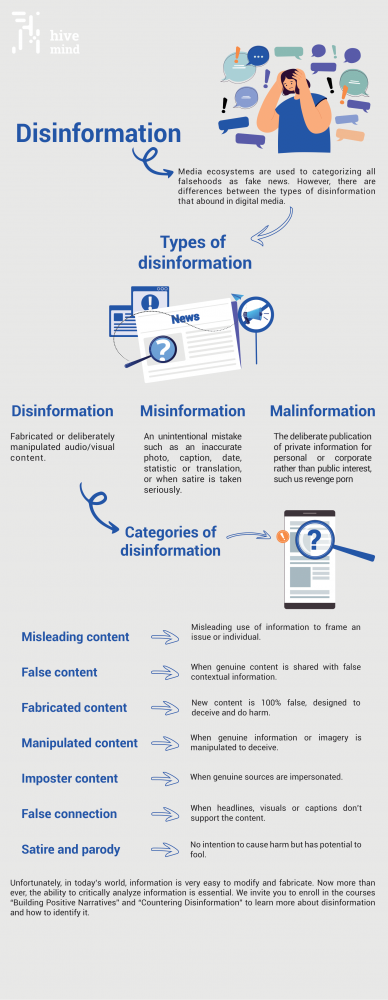The first step is to learn the difference between these three concepts:
Disinformation: Fabricated or deliberately manipulated audio/visual content. Intentionally created conspiracy theories or rumors.
Misinformation: An unintentional mistake such as an inaccurate photo, caption, date, statistic or translation, or when satire is taken seriously.
Malinformation: The deliberate publication of private information for personal or corporate rather than public interest, such us revenge porn. Deliberately changing the context, date or time of genuine content.
In addition to knowing the difference between these types of information disorder, it is important to recognize the most common categories of disinformation:
Misleading Content: Misleading use of information to frame an issue or individual.
False Content: When genuine content is shared with false contextual information.
Fabricated Content: New content is 100% false, designed to deceive and do harm.
Manipulated Content: When genuine information or imagery is manipulated to deceive.
Imposter Content: When genuine sources are impersonated.
False Connection: When headlines, visuals or captions don’t support the content.
Satire and Parody: No intention to cause harm but has potential to fool.

Unfortunately, in today’s world, information is very easy to modify and fabricate. Now more than ever, the ability to critically analyze information is essential.
For this reason, we invite you to register to the "Countering Disinformation" course to learn more about disinformation and how to identify it:
